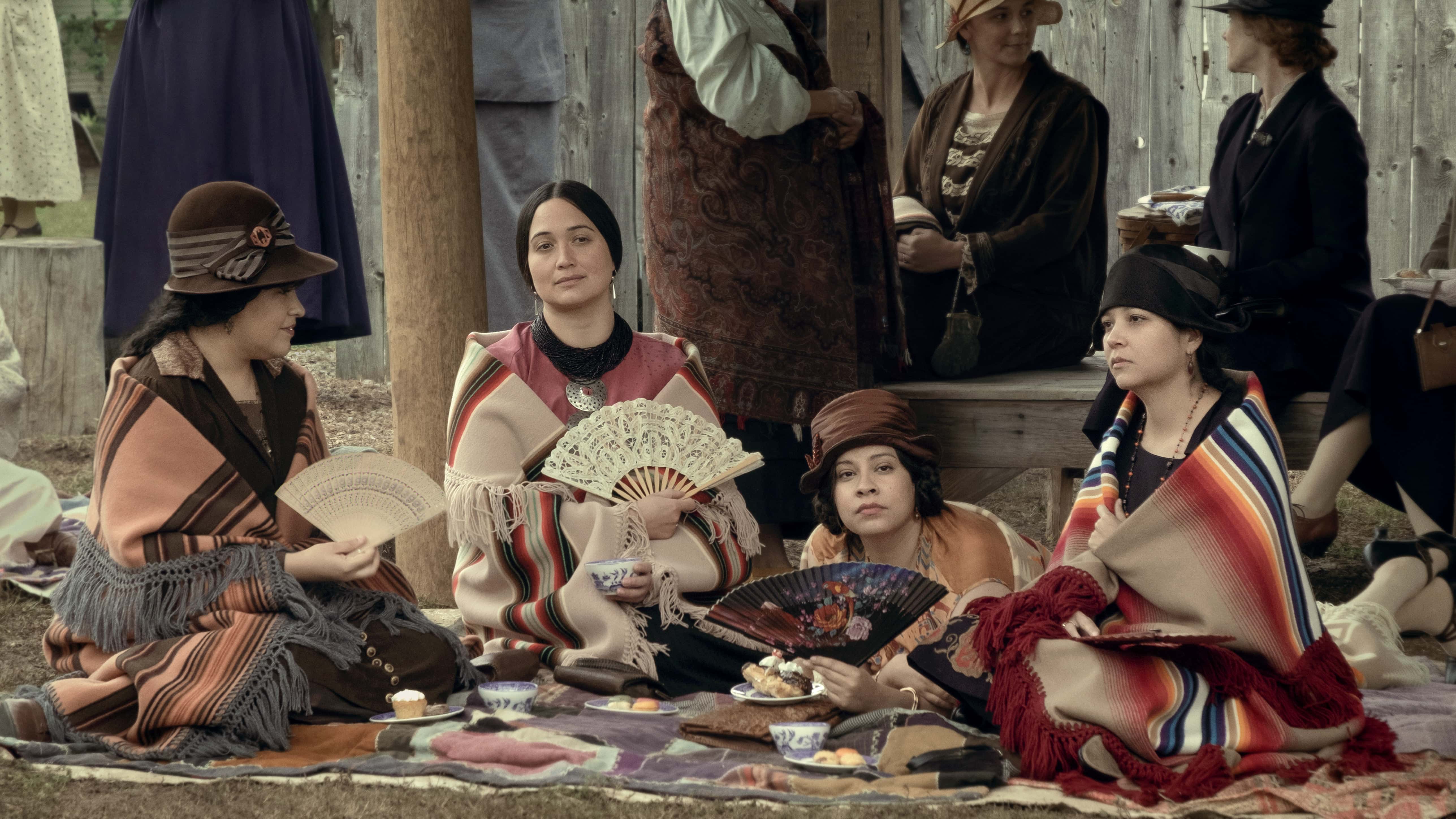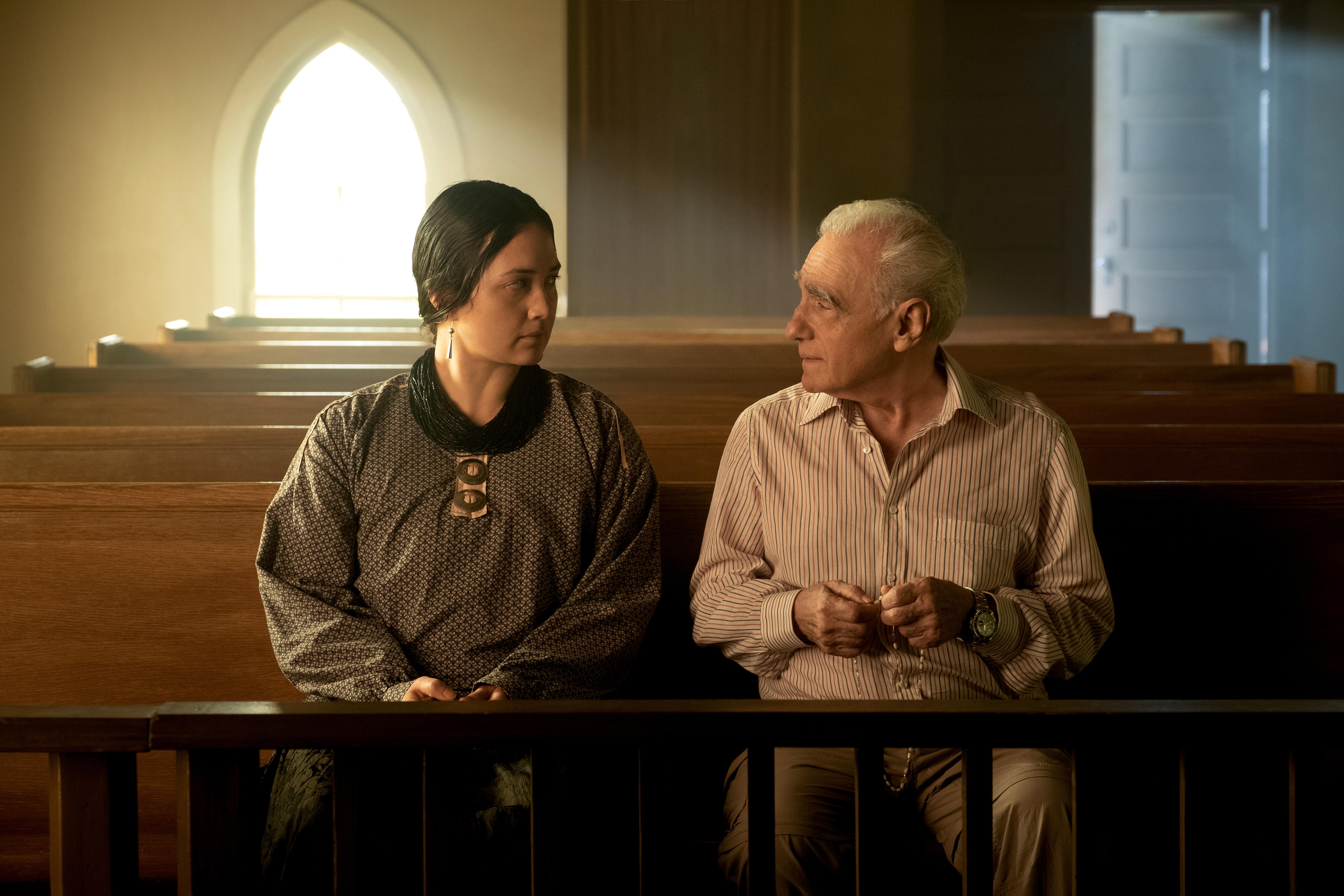 As far back as I could remember, Martin Scorsese has been synonymous with the movies. Now Apple TV+ has financed his latest work, an adaptation of David Grann’s true crime novel The Killers of the Flower Moon about the death of a native American community and the birth of the FBI to the tune of $200 million.
As far back as I could remember, Martin Scorsese has been synonymous with the movies. Now Apple TV+ has financed his latest work, an adaptation of David Grann’s true crime novel The Killers of the Flower Moon about the death of a native American community and the birth of the FBI to the tune of $200 million.
Killers of the Flower Moon will go down as one of the director’s boldest and most furious statements in a career full of them.
Killers of the Flower Moon Review
The year is 1918 and Ernest Burkhart (Leonardo DiCaprio) has just returned from a stint as a cook serving GIs during the first world war. He needs a purpose and his uncle William King Hale (Robert De Niro) is going to give it to him.
Ever since the local Osage population struck oil on reservation land in Oklahoma, money’s been pouring into the area. Hale isn’t satisfied with even the massive sums flowing into his coffers, and sees a way to twist things so that he gets everything the land has to offer.
There’s a Osage family headed by sickly matriarch Lizzie Q (Tantoo Cardinal) who have a claim to a huge portion of oil rich land. When Hale notices that Ernest has a thing for Lizzie’s daughter Mollie (Lily Gladstone) the gears start turning in his head.
If they’re married the land will fall into his clutches should something happen to Lizzie, Mollie, and the rest of her family. To ludicrously understate the case — something is just what happens.
My land

Photo: Apple TV+
Scorsese has become a director with the uncanny ability to stare at evil, to really depict the ins and outs, the everyday business of men with no conscience. The overwhelming feeling one leaves Killers of the Flower Moon with is a gnawing, terrible despair for having stared at the kind of casual sadism on which America was founded. As if you’d spent the day with a serial killer.
Osage language consultant Christopher Cote, who was brought in to deal with issues of authenticity on the film, was lately interviewed on a red carpet at a premiere screening. He said that the film wasn’t for an Osage audience, it was for a white audience, and he’s absolutely right.
The Osage, like any tribe, know in their bones how much the US government and wealthy tyrants like Hale have crippled their communities in the many years since the genocide of the first nations began. Your average white American viewer may think they understand but how can they really?
Killers of the Flower Moon is a movie meant to pay homage to the Osage (whom Hale embraces with one hand and kills with the other) but also to wake up its audience to the effect colonization has had on every aspect of American life.
If the Osage needed to be presented to an American audience, so to speak, it’s because people like Hale conspired to have them wiped out, their identity twisted, and then silenced.
In a chilling display of this methodology, Hale calls an Osage named Henry Roan (William Belleau) his best friend but when he hears that the man feels like a traitor to his tribe, that he has lost the will to live, Hale feels nothing for him and then kills him for insurance money.
Can you spot the wolves in this picture?
Scorsese’s film, like the best of his late work, is as much about the history of communication as it is its ostensible subject. He shows the cruelty of photographic evidence as both a necessary but incomplete record of the Osage. He shows how easily history is rewritten, how a sensationalized account (like the movie itself) can only tell you so much of a story.
Yes the pain of Mollie Burkhart is the film’s most enduring feature; Lily Gladstone’s screams, her hopeless expression, at the loss of everything that gave her life meaning, will stay with you long after the credits have rolled and Martin Scorsese has stepped in for a heartbreaking final cameo.
But what the film struggles with most mightily is that it must tell the story from Ernest Burkhart and King Hale’s perspectives; Scorsese is admitting almost at every turn that his kind of picture is as much an antique as any of the old Roadsters in which his characters tool around Fairfax county, and that something else must take its place. First of all you don’t scare up a $200 million budget without movie stars in the lead, but also Scorsese is making a movie about white violence as much as Osage history.
It’s a successful picture in that regard, if necessarily a frustrating one. Hale and Burkhart’s discussions of killing the latter’s wife’s sisters, and then the images of the murders themselves, are absolutely chilling in their banality and desperation.
Indeed, to hammer home the ways in which this kind of violence was tolerated, indeed celebrated, Scorsese casts country and rock musicians like Charlie Musselwhite, Sturgill Simpson, Jack White, Pete Yorn, and Jason Isbell in crucial parts.
Watching cowboys played by country singers plot to kill women whose only crime is their last name is just plain shocking. Its intended aim is to take the bluster out of the old myths of the west.
Think of westerns, the earliest American film genre, and how they’re based on the myth of white men taming country that never belonged to them. Think of every myth we’ve ever been told. You can’t hold the heroism found in our fictions and the hideous truth of cold blooded murder for a few more dollars in your head at the same time. We were never meant to.

Photo: Apple TV+
Of course the film wouldn’t be so persuasive and awesome without such incredible talent behind and in front of the camera. Scorsese directs with his usual stunning momentum and purpose, adducing the influence of not just classic movies like Robert Wise’s Blood on the Moon and D. W. Griffith’s The Musketeers of Pig Alley, but also 2007’s trio of neo-westerns There Will Be Blood, No Country For Old Men (the welcome presence of both Barry Corbin and Gene Jones confirms this), and The Assassination of Jesse James By The Coward Robert Ford.
DiCaprio and De Niro are both perfectly utilized, the former as a greedy moron who cannot understand himself, the latter a folksy peddler of platitudes . Between the two of them (and ice-veined Scott Shepherd as Ernest’s brother Byron) is a closed loop system of corruption. Terror of the old man and the need for money you couldn’t spend in a lifetime provokes Ernest to do unspeakable things, enabled at all turns by his brother. Together they changed history for the worst.
Gladstone, of course, is a born movie star. Her work in Kelly Reichardt’s Certain Women announced a once-a-generation screen presence and given half of this movie to carry she ably shoulders it. When she takes ill in the third act and the newly minted Federal Bureau of Investigation steps in, the film misses her soulful presence, even if it does mean that we get to spend time with the capable and magnetic likes of Jesse Plemons, Pat Healy, and Tatanka Means, all three magnificent.
The cast is replete with welcome character actors from Larry Fessenden to Brendan Fraser to John Lithgow as well as relative newcomers like Cara Jade Myers, JaNae Collins, and Jillian Dion. Everyone carries their weight, everyone leaves an impression.
This is a massive work with a million moving parts, and yet its effect is devastatingly simple: this is what happens when we celebrate materiality over people. “You’re my wealth,” Mollie says to one of her sisters, mere moments before she loses her for good.
Killers of the Flower Moon is the work of a man who knows only too well that everything slips away. We rarely get to choose what survives. Scorsese manages one optimistic sentiment amidst all this senseless horror, that images survive when all else has died. We cannot undo centuries of immiseration but it’s never too late to tell the truth about what we did, and what we still do.
★★★★★
Watch Killers of the Flower Moon on Apple TV+
You can now watch Killers of the Flower Moon in theatres now and on Apple TV+ in a few weeks.
Rated: R
Watch on: Apple TV+
Scout Tafoya is a film and TV critic, director and creator of the long-running video essay series The Unloved for RogerEbert.com. He has written for The Village Voice, Film Comment, The Los Angeles Review of Books and Nylon Magazine. He is the author of Cinemaphagy: On the Psychedelic Classical Form of Tobe Hooper and But God Made Him A Poet: Watching John Ford in the 21st Century, the director of 25 feature films, and the director and editor of more than 300 video essays, which can be found at Patreon.com/honorszombie.
![Apple TV+ movie Killers of the Flower Moon is grueling but important [Review] Jesse Plemons and Robert De Niro match wits in Martin Scorsese's Killers of the Flower Moon](https://www.cultofmac.com/wp-content/uploads/2023/10/Killers_Of_The_Flower_Moon_Photo_0106-1536x643.jpg)


